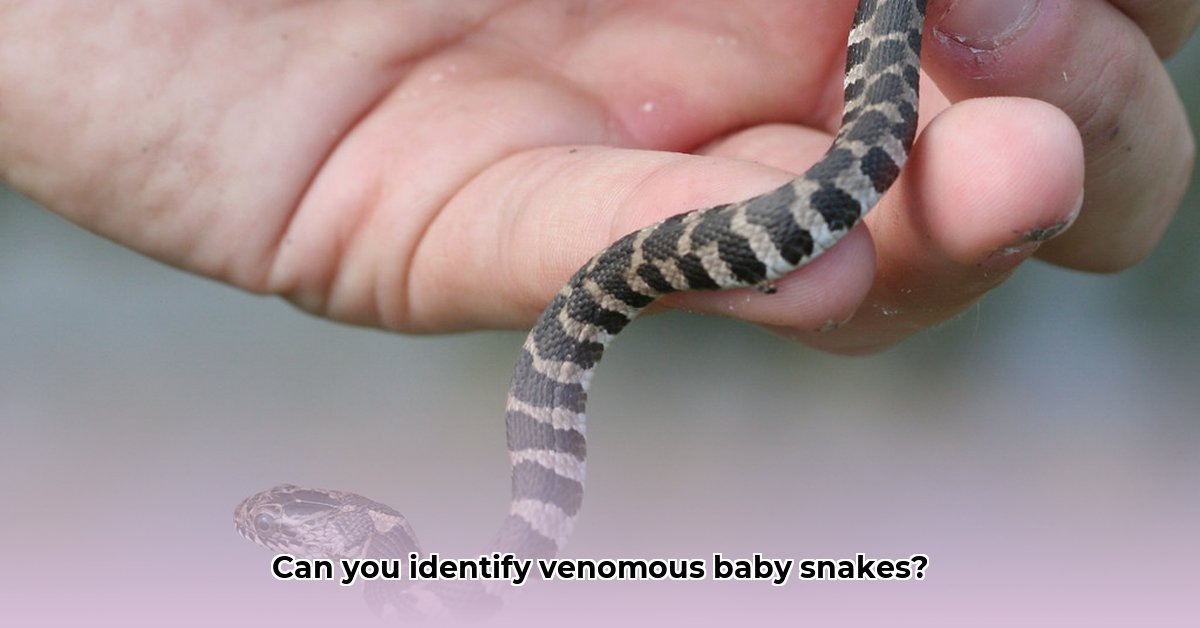
Identifying baby snakes can be challenging, even for experts. Their appearance often differs significantly from adults, and many harmless species mimic venomous ones. This guide provides a structured approach to safe and accurate identification, focusing on key features and regional variations. For more images, see this helpful guide on baby snake identification.
Identifying Venomous Baby Snakes: A Step-by-Step Approach
Successfully identifying venomous baby snakes requires a careful, multi-faceted approach. Relying on a single characteristic is unreliable and potentially dangerous. This step-by-step guide will increase your chances of accurate identification while prioritizing safety.
Step 1: Assess the Location
Geographic location is crucial. Venomous species vary dramatically by region. A rattlesnake in Arizona is far more likely than one in Maine. Consult regional field guides and reputable online resources specific to your area. This initial step significantly narrows down the possibilities. "Knowing the region dramatically improves your chances of accurate identification," states Dr. Eleanor Vance, Herpetologist at the University of California, Berkeley.
Step 2: Observe the Head Shape
While some venomous snakes have triangular heads, this isn't a universal rule. Many harmless snakes also exhibit triangular or slightly flattened heads. “Head shape alone is unreliable for identifying venomous baby snakes,” cautions Dr. Vance. This observation should be combined with other clues.
Step 3: Examine the Pupils
Elliptical pupils (cat-like eyes) are more commonly associated with venomous snakes than round pupils. However, pupil shape can vary with age, light conditions, and even species. A round pupil does not guarantee the snake is harmless.
Step 4: Check for Loreal Pits (Pit Vipers)
Pit vipers (e.g., rattlesnakes, copperheads, cottonmouths) possess heat-sensing pits between their eyes and nostrils. The presence of these pits strongly suggests a venomous snake. However, their absence doesn't guarantee a snake is harmless, as many venomous species lack these pits.
Step 5: Analyze Coloration and Patterns
Although coloration and patterns can be helpful, they are unreliable on their own. Baby snakes often have brighter, more contrasting colors than adults. Their markings can also change as they grow. Combine color observations with other data points for better accuracy. Remember that many non-venomous species mimic the patterns of venomous snakes.
Step 6: Maintain a Safe Distance
Never approach or handle a snake you can't positively identify. Maintaining a safe distance (at least 10 feet) protects you and the snake. Rapid movements can trigger a defensive response. Remember, these animals have defense strategies that can be harmful. Many venomous snakes are not naturally aggressive unless they feel threatened.
Step 7: Consult Experts
If you encounter a snake you're unsure about, contact your local wildlife agency, a herpetologist, or an experienced snake handler. Providing clear photographs significantly aids identification.
Key Features and Regional Variations
Accurate identification frequently requires integrating several observations and regional knowledge. A venomous species in one area might be harmless in another. Regional field guides are invaluable tools. It’s vital to remember that there are exceptions to every rule. No single characteristic guarantees a confident identification of venomous baby snakes.
Key Takeaways:
- Multiple characteristics are necessary for reliable identification.
- Geographic location is crucial; species composition varies regionally.
- Never handle a snake unless you're a trained professional.
- Head shape, pupil shape, and loreal pits (for pit vipers) are helpful but not definitive.
- Coloration is less reliable, but valuable when combined with other evidence.
- Always prioritize safety: maintain a safe distance and seek expert help when uncertain.